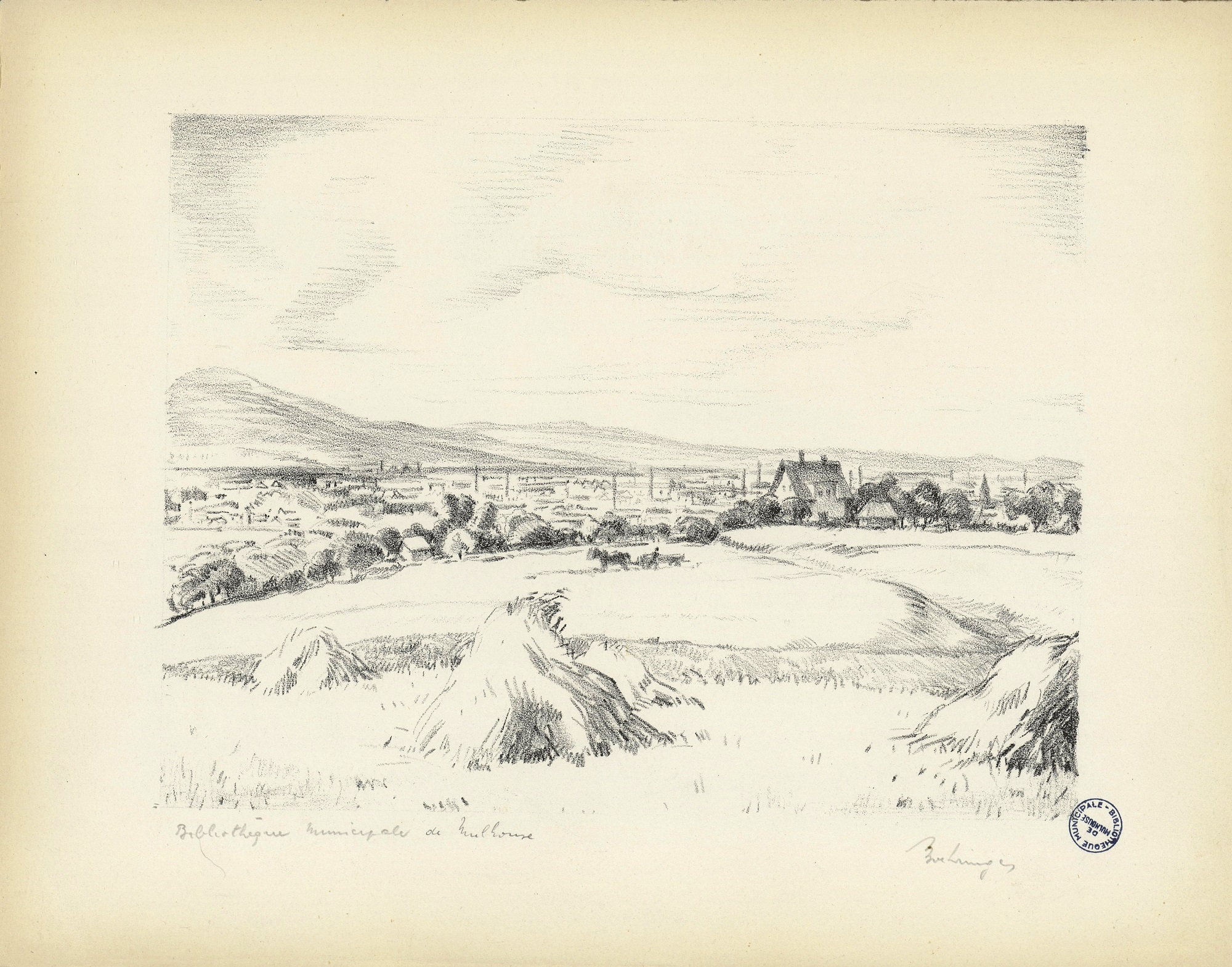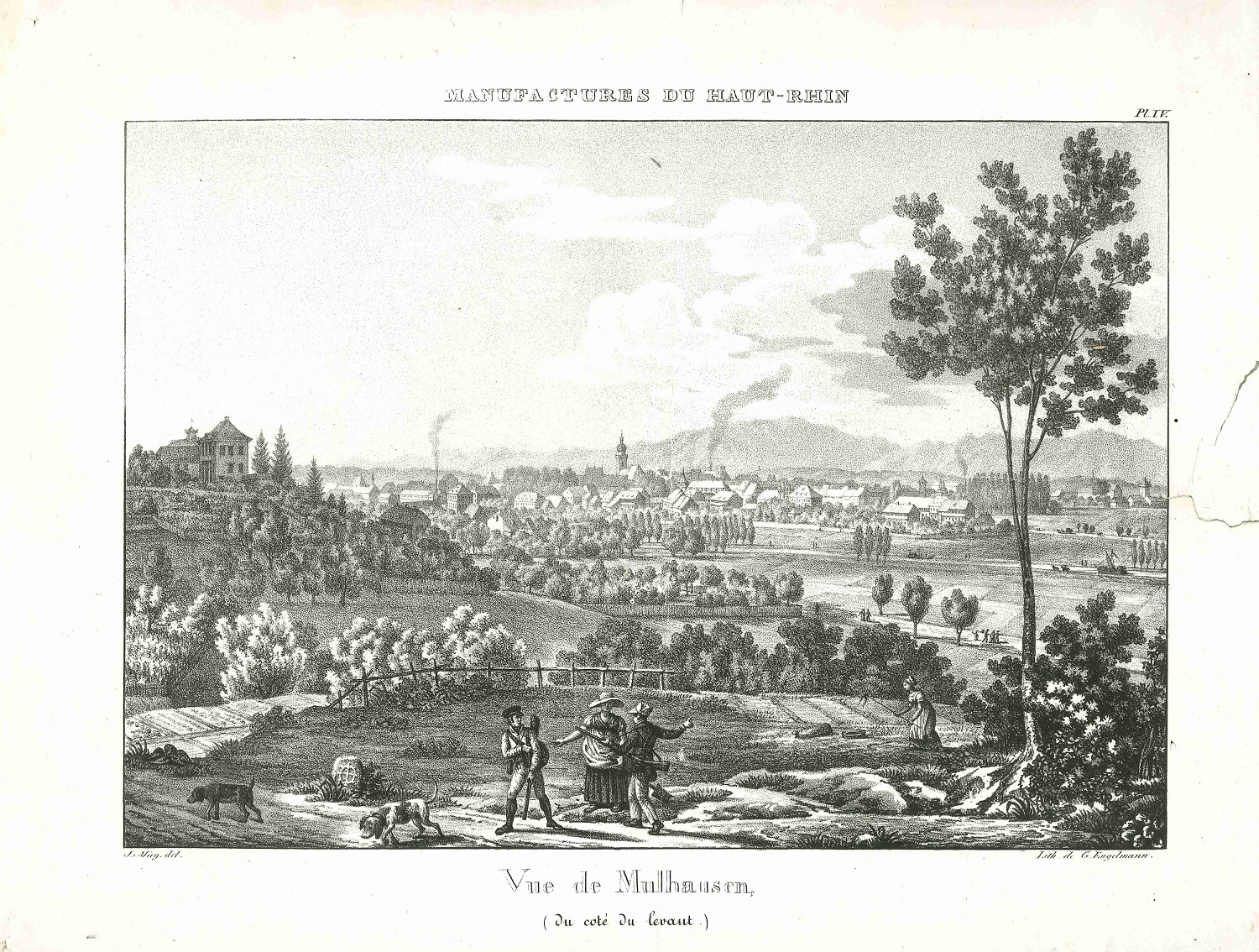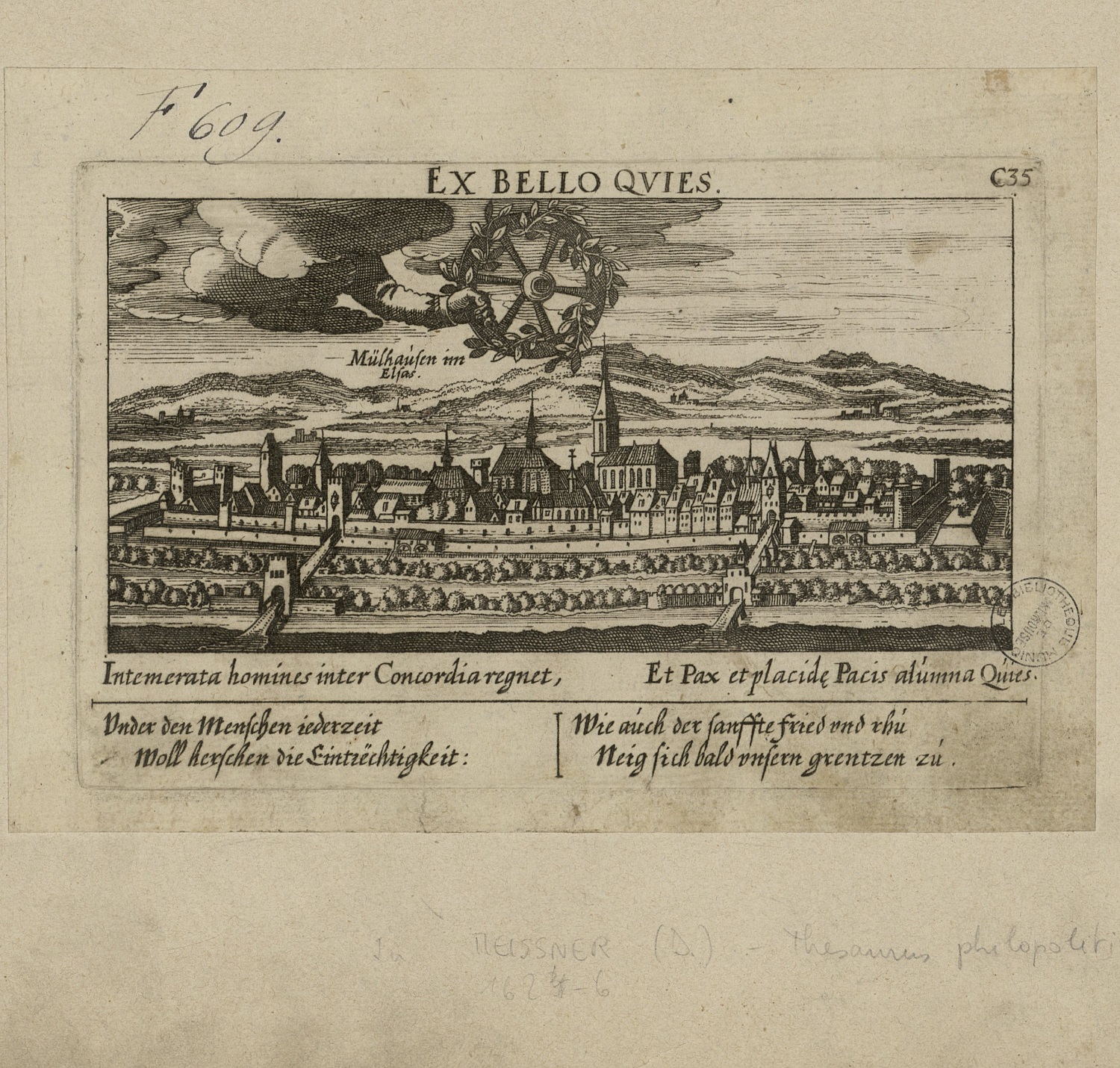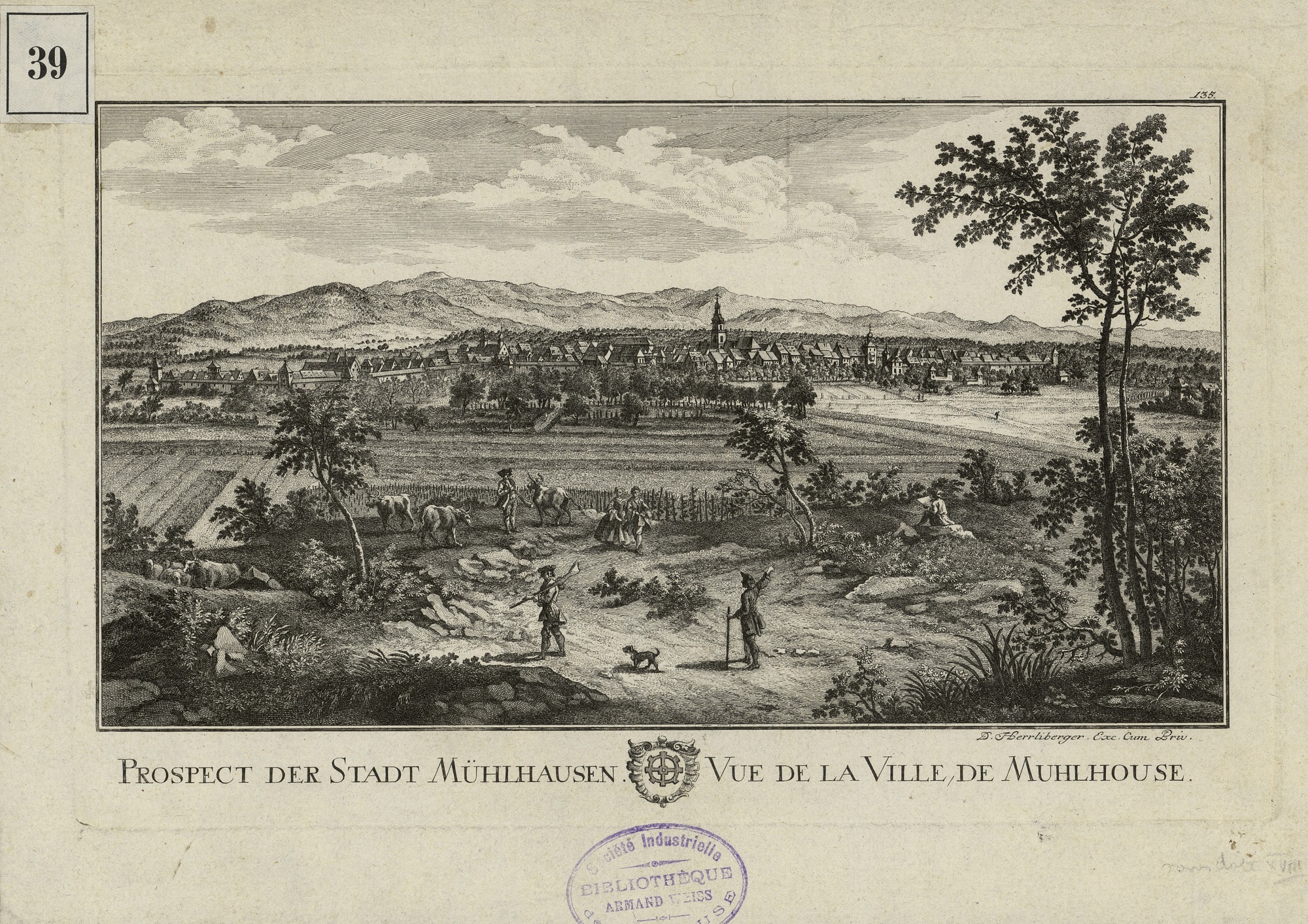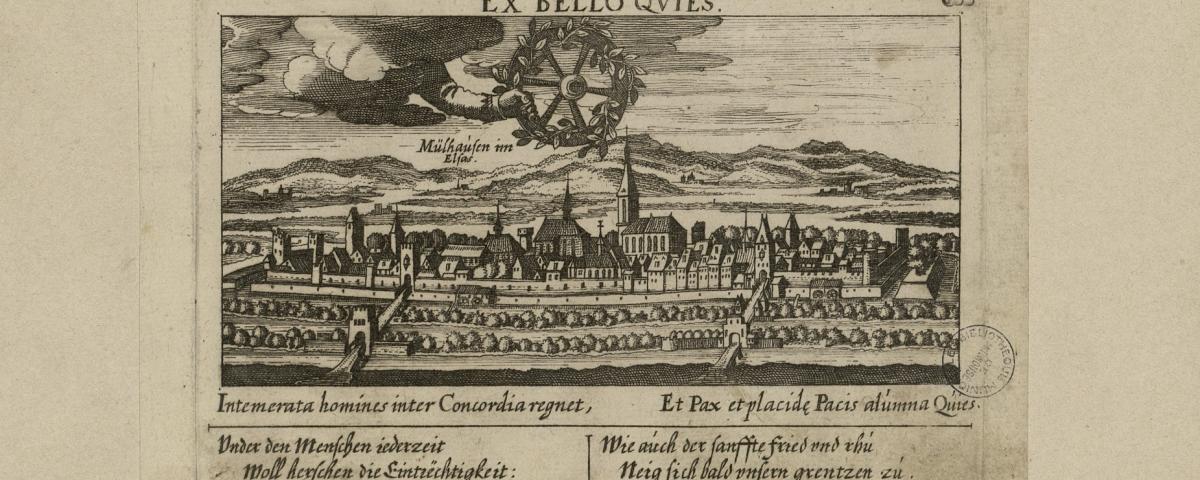
Extract from M. Guggenbuhl's article, "De deux vues jumelles de Mulhouse éditées par Engelmann Père & Fils" (in L'Annuaire historique de Mulhouse - 2021, pp. 95-108):
We are familiar with 18th century copper engraved plans, which are embellished and enlivened at the periphery by figurative representations of emblematic buildings, mostly place of power (political, ecclesiastical, etc.), engineering structures (bridges, canals, etc.), and so forth.
There is, in fact, a small tradition of prints showing oblique or panoramic views of Mulhouse from the heights of the Rebberg neighbourhood towards the Vosges (see opposite) or, to use the title of this emblematic view from the Manufactures du Haut-Rhin series (Mulhouse, Engelmann, 1822-1825, Plate III) by Jean Mieg: "Du côté du levant" (see below).
